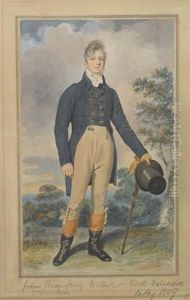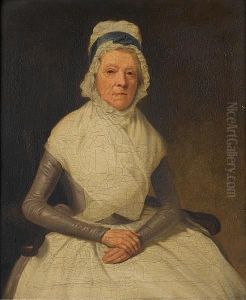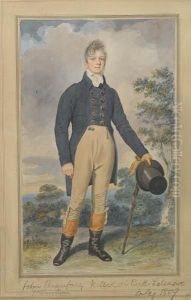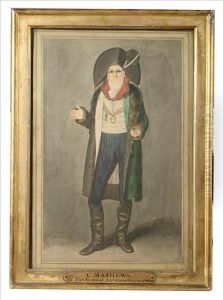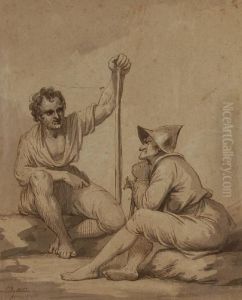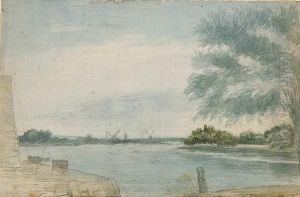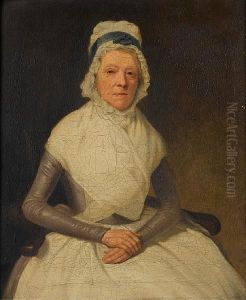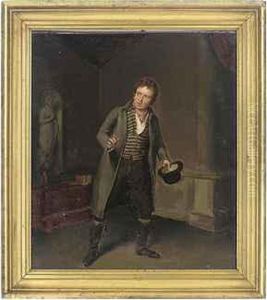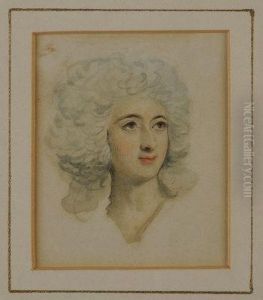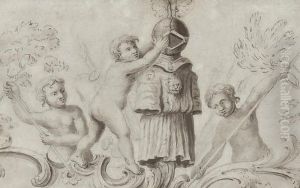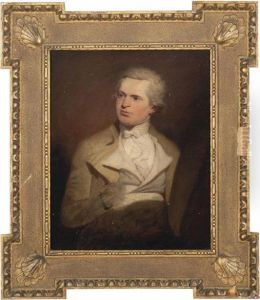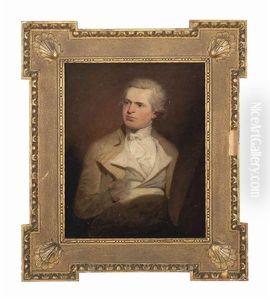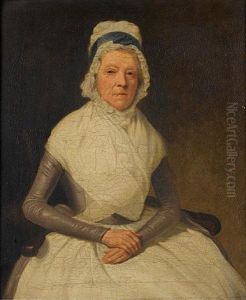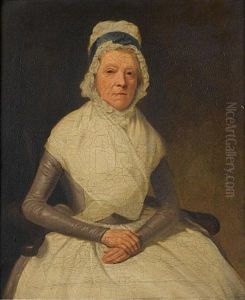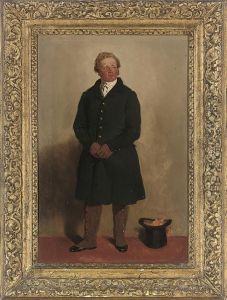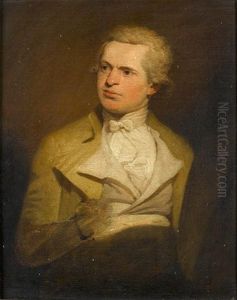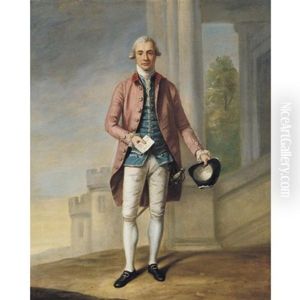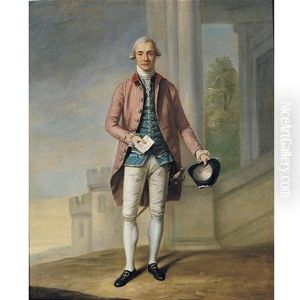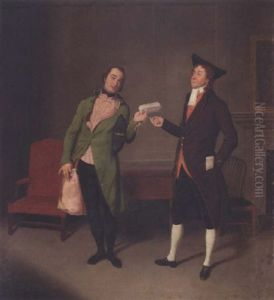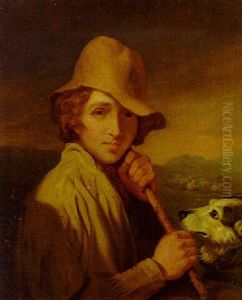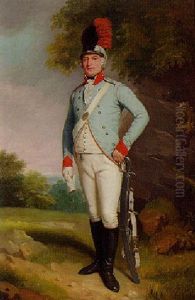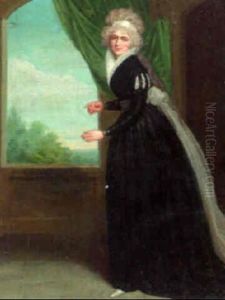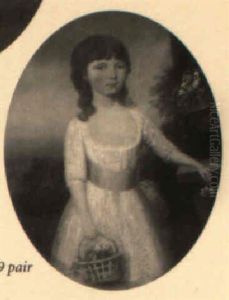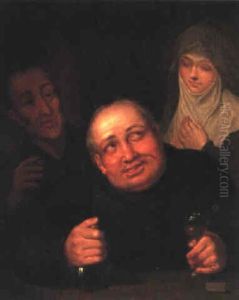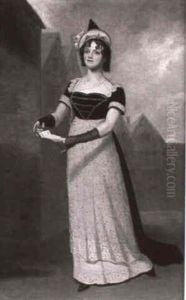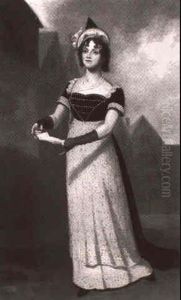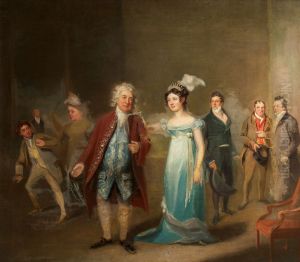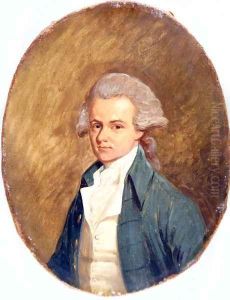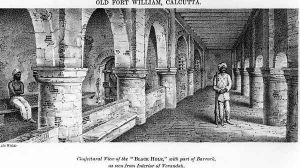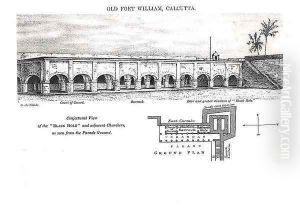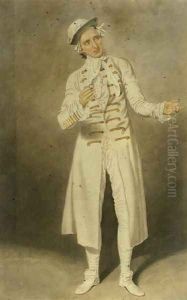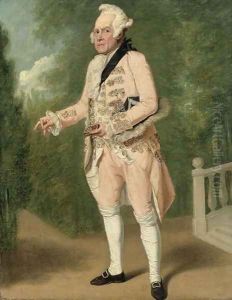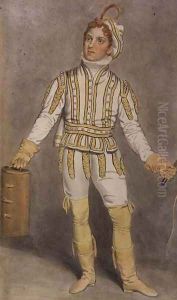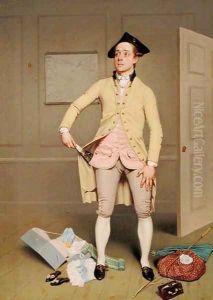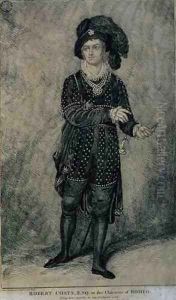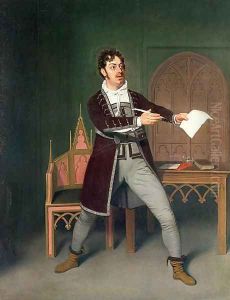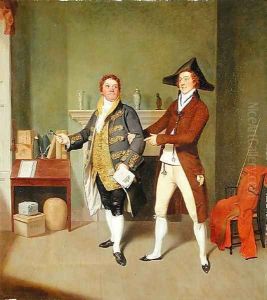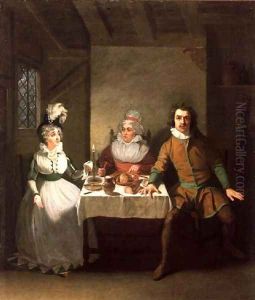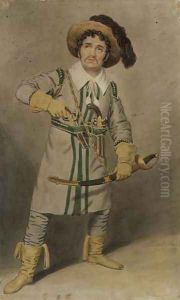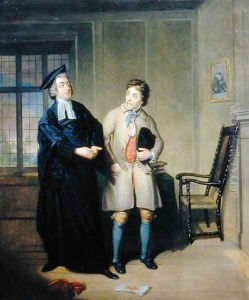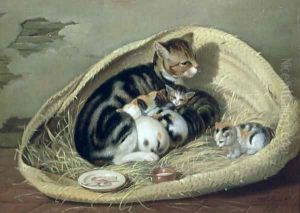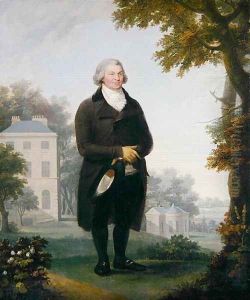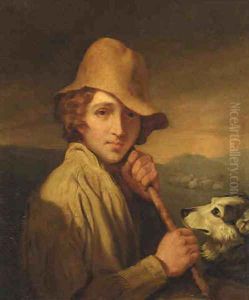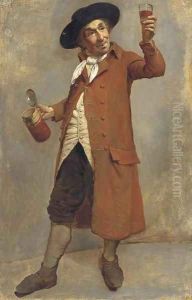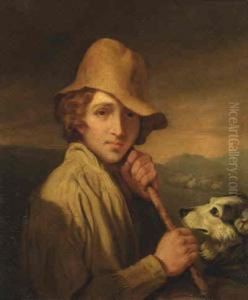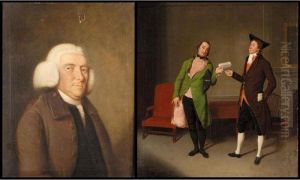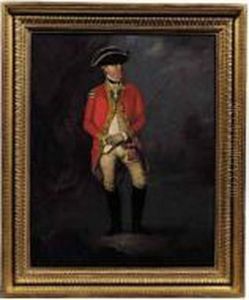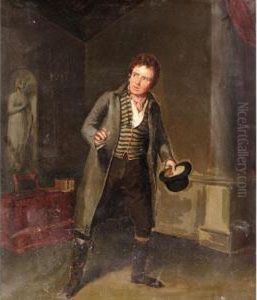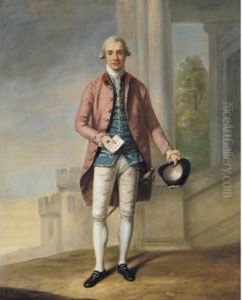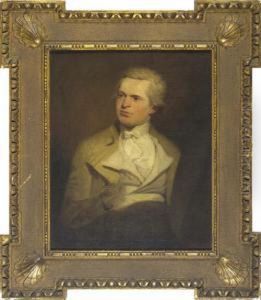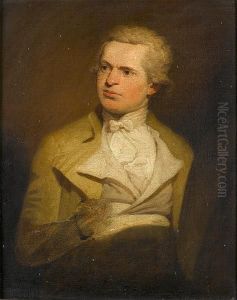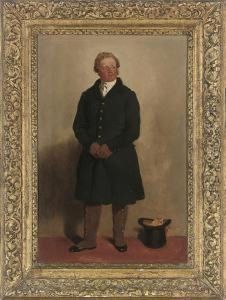Samuel de Wilde Paintings
Samuel de Wilde was a British artist known primarily for his work as a portraitist and a painter of theatrical subjects. Born in 1748 in London, de Wilde established himself as a significant figure in the artistic landscape of the late 18th and early 19th centuries.
De Wilde began his artistic career as an apprentice to a coach painter, which was a common starting point for many artists of the time. He later transitioned to portrait painting, and by the 1770s, he was exhibiting works at the Society of Artists. His early work was well received, and by the 1780s, de Wilde had become a regular exhibitor at the Royal Academy.
A pivotal moment in de Wilde's career came when he started to focus on painting scenes from contemporary theatre, which was flourishing in London at the time. His ability to capture the spirit and drama of stage performances in his paintings was admired, and he quickly became renowned for his theatrical paintings. De Wilde's works provide valuable insights into the costumes, set designs, and acting styles of the period.
Among his notable works are portraits of famous actors and actresses of his day, such as Sarah Siddons and John Philip Kemble, in their iconic roles. His paintings were characterized by their vivid portrayal of characters and the lively rendering of the theatrical atmosphere.
De Wilde's contribution to the art world extends beyond his paintings. He is also known for his illustrations for books and periodicals, which helped to disseminate his work to a wider audience. Despite his prolific output, de Wilde was not particularly wealthy, and he lived modestly throughout his life.
Samuel de Wilde died in 1832, leaving behind a legacy as one of the foremost painters of theatrical subjects in British art. His work has continued to be of interest to art historians and theatre enthusiasts, providing a unique visual record of the Georgian stage.
